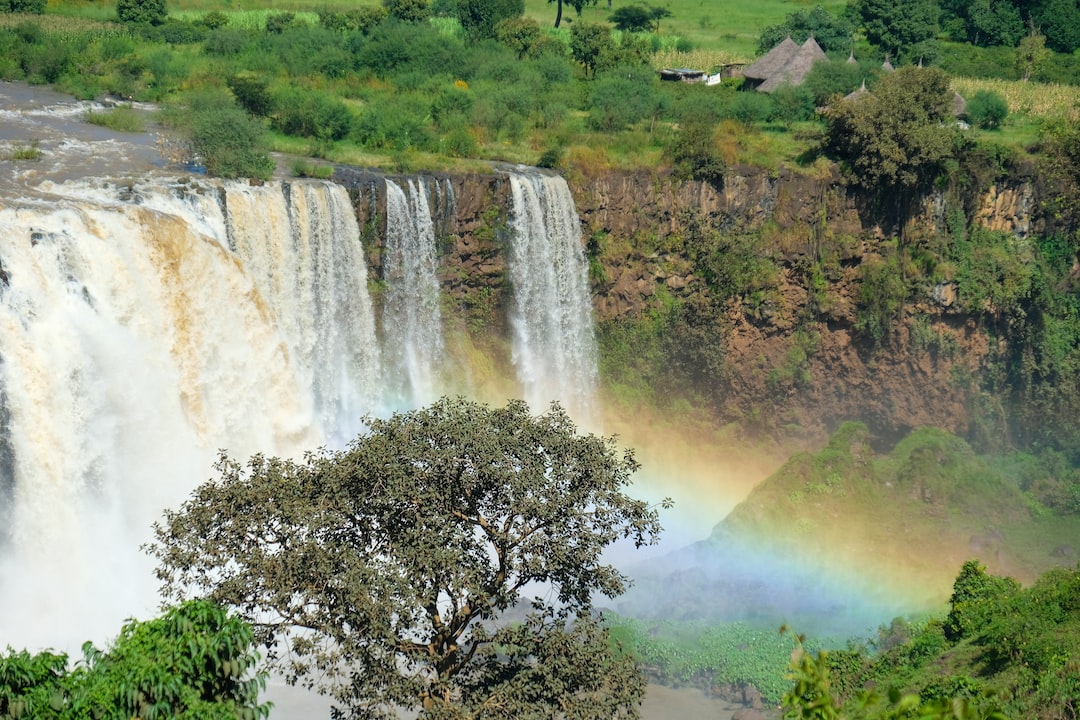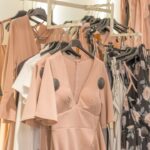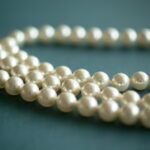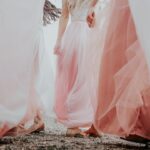Are you looking for the perfect way to make your wedding stand out from the rest? Why not consider Ethiopian Wedding Traditions Clothes. Not only will this unique style of clothing add a splash of culture and tradition, it can also be very beautiful. From traditional colors and fabrics used in Ethiopian weddings to accessories that complete the look, there are many options available when it comes to ethiopian wedding traditions clothes. Whether you’re looking for something classic or modern, we’ve got all your needs covered with our comprehensive guide on ethiopian wedding traditions clothes. Get ready to dive into an exciting new world of fashion as we explore popular colors, fabrics and accessories associated with these timeless pieces.
Ethiopian Wedding Traditions Clothes
Traditional Ethiopian Wedding Attire
The traditional clothing worn at Ethiopian weddings is a reflection of the country’s rich culture and heritage. For brides, white is the most popular color for their wedding dress. The fabric used can range from cotton to silk, with intricate embroidery or beadwork adorning the neckline and sleeves. Brides often wear headpieces adorned with jewels, as well as long earrings and necklaces made of gold or silver.
Grooms typically wear a traditional suit known as a “gabi” which consists of an ankle-length robe with wide sleeves and a sash around the waist. The gabi is usually made from fine fabrics such as cotton or wool in shades of white, cream, or beige. Grooms also wear turbans on their heads decorated with colorful beads and feathers that match their outfits.
Guests attending Ethiopian weddings are expected to dress modestly but elegantly in bright colors such as reds, blues, greens, yellows, purples and oranges depending on the occasion. Women may choose to wear dresses made from lightweight fabrics like chiffon while men will opt for suits tailored from heavier materials like linen or velvet. Accessories such as shawls or scarves add an extra touch of sophistication to any outfit.
Traditional Ethiopian wedding attire is a reflection of the culture and its history. With vibrant colors, intricate designs, and unique fabrics, these traditional looks are sure to make your special day one to remember. For more ideas on what to wear for an Ethiopian wedding celebration, read on for popular colors and accessories.
Popular Colors for Ethiopian Weddings
When it comes to Ethiopian weddings, color plays an important role in the overall look and feel of the event. White and gold is a popular combination for traditional bridal attire, as it symbolizes purity and joy. The bride typically wears a white dress with intricate gold embroidery or beading, while the groom often opts for a simple white shirt paired with golden accessories such as cufflinks or pocket squares.
For guests attending an Ethiopian wedding, red and white are also common colors seen in traditional outfits. Red is believed to bring good luck to newlyweds, so many guests choose to wear shades of red such as burgundy or maroon when attending ceremonies. White can also be worn by both men and women alike; however, men may opt for lighter shades like cream or ivory if they wish to stand out from the crowd.
Finally, blue and green are two other popular color combinations used in Ethiopian weddings. Blue symbolizes peace while green represents fertility – making them perfect choices for couples who want their special day to reflect these values. Bridesmaids often wear dresses featuring both hues while groomsmen may don suits that incorporate one of these colors into their ensemble (such as navy trousers paired with a light green shirt). Accessories like ties or pocket squares can also be used to add subtle pops of color without being too overwhelming.
No matter what color scheme you decide on for your big day, make sure that you feel comfortable wearing it. This is your special day, so take some time before deciding on any particular outfit choice to ensure that you are confident walking down the aisle.
Ethiopian weddings are known for their vibrant and colorful clothing, so it’s no surprise that some of the most popular colors used in these celebrations include bright reds, oranges, yellows, blues, and greens. For a more traditional look, fabrics such as cotton, silk and wool can be used to create stunning pieces – let’s explore this further.
Popular Fabrics Used in Ethiopian Weddings
When it comes to traditional Ethiopian weddings, fabrics play an important role in the ceremony. Cotton is one of the most popular fabrics used for wedding attire due to its lightweight and breathable nature. It’s also a durable fabric that can be easily dyed into any color desired. Brides often choose white cotton dresses with intricate embroidery or colorful patterns as their bridal gowns while grooms usually opt for white cotton suits with matching trousers and jackets.
Silk is another popular choice when it comes to traditional Ethiopian wedding attire. Its luxurious feel makes it perfect for formal occasions such as weddings, where couples want to look their best on their special day. Silk is also known for its strength and durability, making it ideal for long-lasting garments like wedding gowns and suits that will last through many years of marriage. Brides typically wear silk dresses adorned with lace or other embellishments while grooms may opt for a more subtle look by wearing a simple black suit made from silk fabric.
The vibrant colors and textures of the fabrics used in Ethiopian weddings are a beautiful representation of the culture, making for a truly memorable experience. From these popular fabrics to traditional accessories, there is much to explore when it comes to celebrating an Ethiopian wedding.
Traditional Accessories for Ethiopian Weddings
Traditional accessories for Ethiopian weddings are a beautiful and important part of the celebration. Headpieces and hair adornments, such as beaded headbands or tiaras, are often worn by brides to add a touch of elegance to their look. Necklaces and earrings made from gold or silver can also be used to complete the bride’s ensemble. Shoes and sandals in bright colors like red, blue, green, yellow, or white are popular choices for both brides and grooms on their special day.
For those looking for something more unique than traditional wedding attire, there is an array of options available when it comes to accessories. For example, colorful shawls with intricate designs can be draped over the shoulders of both men and women during the ceremony while scarves with decorative patterns can add a touch of flair to any outfit. Wraps made from silk fabric provide another way to dress up an outfit without going overboard on jewelry or other embellishments.
When selecting accessories for your Ethiopian wedding day look, keep in mind that some items may have religious significance so it is best to consult with your family members before making any decisions about what you will wear on your big day. No matter what type of accessory you choose, make sure that it reflects who you are as a couple so that everyone attending your wedding knows how much love you share.
From headpieces to shoes, traditional accessories for Ethiopian weddings are an important part of the festivities and add a special touch to the bride’s look. Now let’s explore what type of attire is typically worn at these celebrations.
Traditional Ethiopian Wedding Attire
The bride’s outfit is typically a white dress with intricate embroidery and beading. She may also wear an ornate headpiece or veil for special occasions. The groom usually wears a tailored suit in shades of blue or green, often accessorized with a matching hat and scarf. Bridesmaids and groomsmen will usually coordinate their outfits with the couple’s colors, but they can also choose more casual clothing if desired.
The most popular colors for Ethiopian weddings are white, gold, red, blue, and green. White symbolizes purity while gold represents wealth and prosperity; both are used to signify the importance of marriage in Ethiopian culture. Red is another popular color choice as it stands for love and passion between two people who are about to embark on this new journey together. Blue is associated with loyalty while green signifies fertility – all important qualities when starting a family.
Fabrics such as cotton, silk, wool, linen or polyester blends are commonly used in traditional Ethiopian wedding attire due to their durability and comfortability during hot weather conditions that often occur during ceremonies held outdoors. Accessories such as headpieces (for brides), necklaces/earrings (for brides and grooms), shoes/sandals (for everyone) and shawls/scarves/wraps (for guests) add an extra layer of elegance to any look.
From the traditional white and gold to the more modern red and white, Ethiopian wedding attire is a unique blend of cultural influences. For those looking for something even more unique, consider using blue and green in your color scheme.
Popular Colors for Ethiopian Weddings
White and Gold Color Scheme:
White and gold are the most popular colors for Ethiopian weddings. The bride traditionally wears a white dress with gold accents, while the groom is usually dressed in a traditional white suit with golden embroidery. Guests often wear shades of white and gold to match the couple’s attire. Red and White Color Scheme
Red is also an important color in Ethiopian weddings, symbolizing love, fertility, and joy. Brides often choose red dresses or gowns with intricate designs that feature both red and white hues. Grooms may opt for a more subtle look by wearing a plain white suit with hints of red trimming or accessories such as pocket squares or ties. Blue and Green Color Scheme
Blue is another popular color choice at Ethiopian weddings; it represents peace, harmony, loyalty, faithfulness, trustworthiness, purity of heart, truthfulness in speech—all qualities that are essential for marriage success. Green is also used to represent growth in life together as husband and wife. Brides may choose blue dresses adorned with green embroidery or beading details while grooms might opt for suits featuring blue lapels paired with green ties or pocket squares.
Ethiopian weddings are a beautiful sight to behold, and the colors chosen for the celebration are an important part of that. From white and gold to red and white or blue and green, there is no shortage of vibrant hues to choose from. Now let’s take a look at some traditional accessories for Ethiopian weddings.
Accessories for Ethiopian Weddings
Ethiopian weddings are full of vibrant colors, beautiful fabrics, and unique accessories. Accessories play an important role in traditional Ethiopian wedding attire, as they can add a personal touch to the look. From headpieces and jewelry to shoes and socks, there is no shortage of options when it comes to accessorizing for an Ethiopian wedding.
Headpieces and Jewelry:
Headpieces are often seen at Ethiopian weddings as they help complete the bride’s look. Popular choices include elaborate crowns made from gold or silver metalwork with intricate designs that feature colorful beads or stones. Traditional bridal jewelry includes necklaces, earrings, bracelets, anklets, rings, and nose rings made from precious metals such as gold or silver with colorful gemstones like rubies or sapphires set into them. Grooms typically wear simple bands on their wrists or necks while groomsmen may opt for more ornate pieces depending on their taste.
Shoes and Socks:
Shoes are another essential part of any wedding outfit in Ethiopia; both brides and grooms usually wear sandals decorated with beading or embroidery work in bright colors such as reds and blues that match the color scheme of their outfits. For colder months during wintertime weddings some couples choose to wear boots instead of sandals while still keeping true to traditional style by decorating them with embroidery work along the sides or toes for added flair. Women also often wear white stockings underneath their dresses which helps keep warm during outdoor ceremonies held in cooler weather conditions.
Shawls, scarves, and wraps have become increasingly popular among brides who want a little extra coverage without sacrificing style. These garments come in many different styles ranging from lightweight chiffon shawls perfect for summertime ceremonies all the way up to heavy woolen wraps ideal for winter nuptials; whatever your preference you’re sure to find something that fits your needs perfectly. Bridesmaids will often coordinate these items with either matching colors (such as pink) or complementary hues (like purple). Additionally, groomsmen may choose coordinating ties, pocket squares, cummerbunds, bowties etc if desired but this isn’t always necessary since most men prefer wearing suits over traditional clothing anyways so having too much going on might be visually overwhelming.
From the delicate headpieces and jewelry to the bright shawls, scarves, and wraps, accessories play an important role in Ethiopian weddings. Now let’s take a look at what clothing is traditionally worn during these special ceremonies.
Traditional Ethiopian Wedding Ceremony Clothing
Traditional Ethiopian wedding ceremonies are full of beautiful and unique customs, including the clothing worn by brides, grooms, and family members. The bride’s dress is typically a long white gown with intricate gold embroidery. This traditional style often includes an ornate headpiece that symbolizes her status as a married woman. The groom usually wears a tailored suit in either black or white with gold accents such as cufflinks or pocket squares. Family members also wear special attire for the ceremony; women may choose to wear colorful dresses while men opt for more formal suits in shades of blue or green.
The accessories chosen for Ethiopian weddings are just as important as the clothing itself. Brides often accessorize their look with jewelry such as necklaces, earrings, and bracelets made from precious metals like gold and silver. Grooms may add matching pieces to complete their outfit while family members can choose from a variety of shawls, scarves, wraps, shoes and socks to match their ensemble.
Ethiopian weddings are steeped in tradition so it is important that everyone involved adheres to the proper dress code when attending one of these events. By following these guidelines, you can ensure that your wedding will be an unforgettable experience filled with joyous celebration.
Conclusion
Ethiopian wedding traditions clothes are a beautiful way to celebrate your special day. From traditional attire and accessories, to popular colors and fabrics used in Ethiopian weddings, there is something for everyone. Whether you choose to go all out with the traditional clothing or opt for something more modern, it’s important that you feel comfortable and confident on your big day. No matter what style of ethiopian wedding traditions clothes you decide on, make sure it reflects who you are as a couple.




